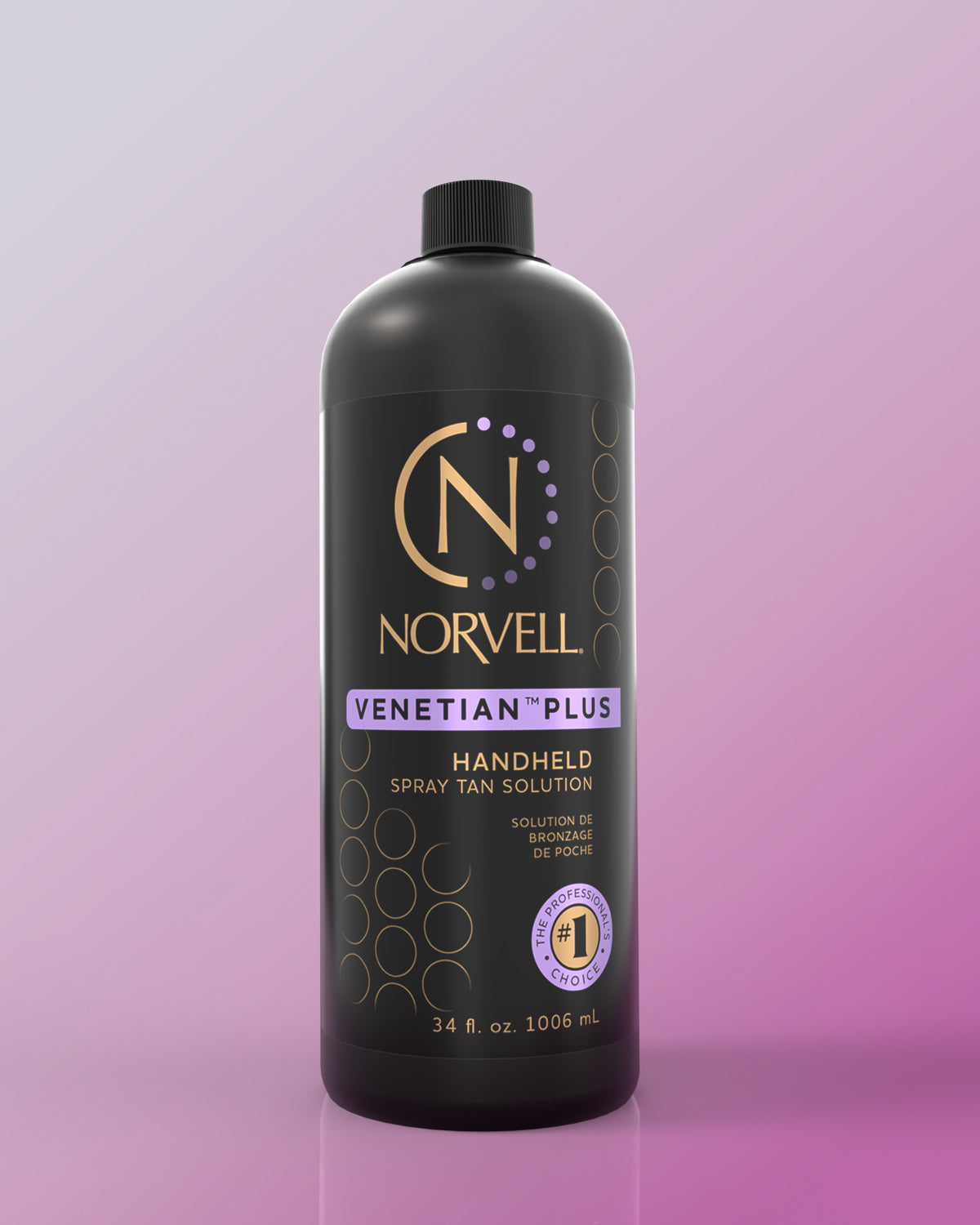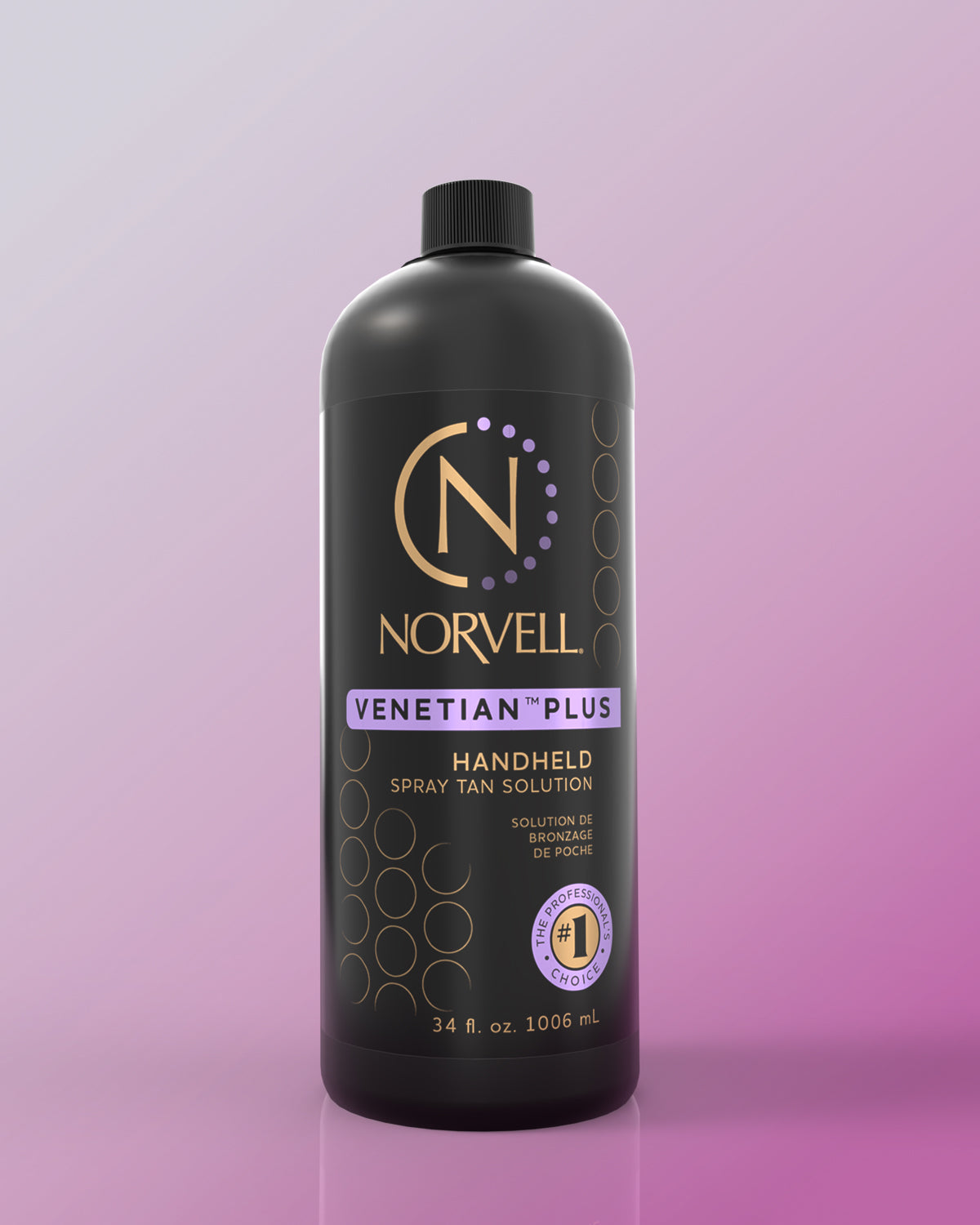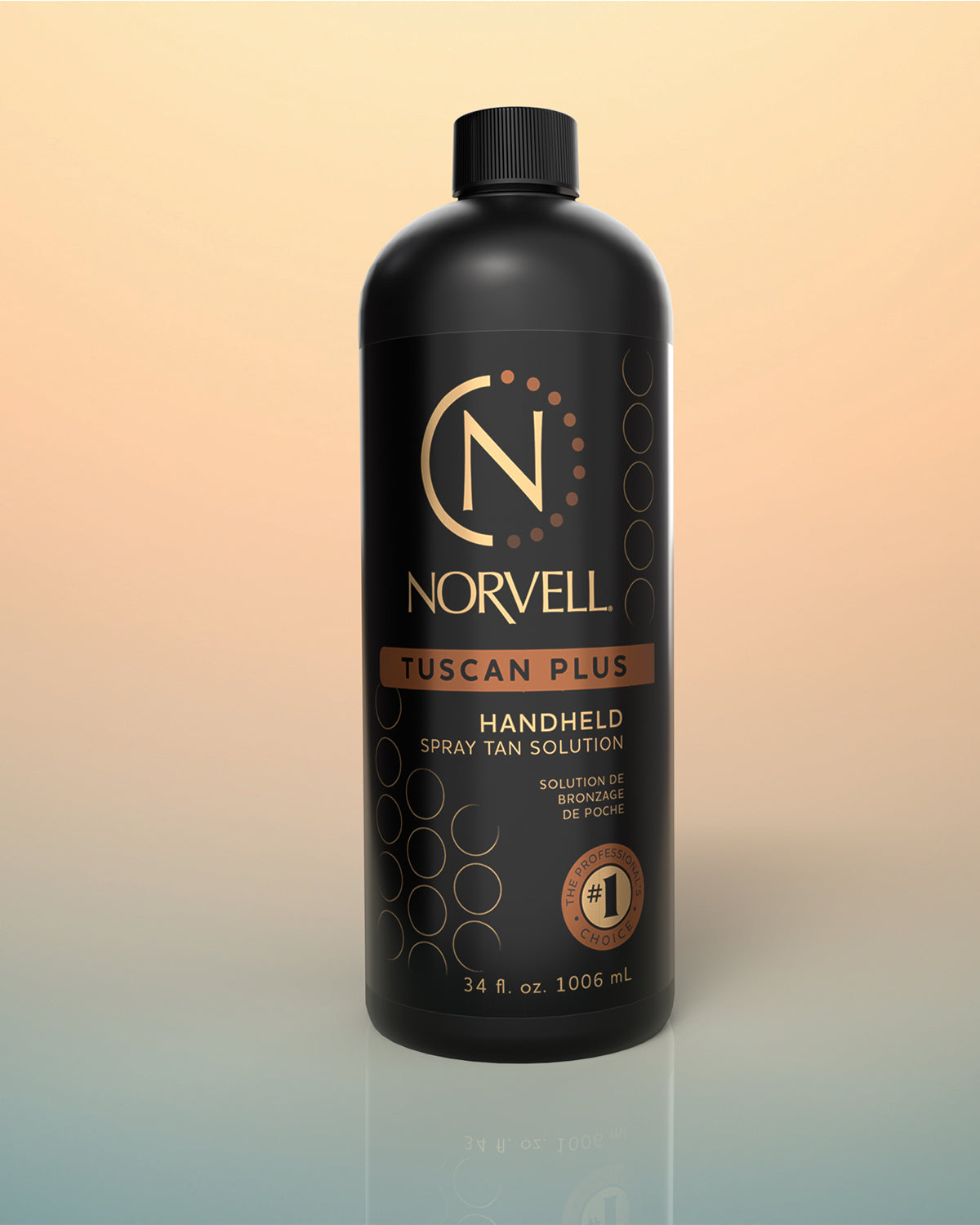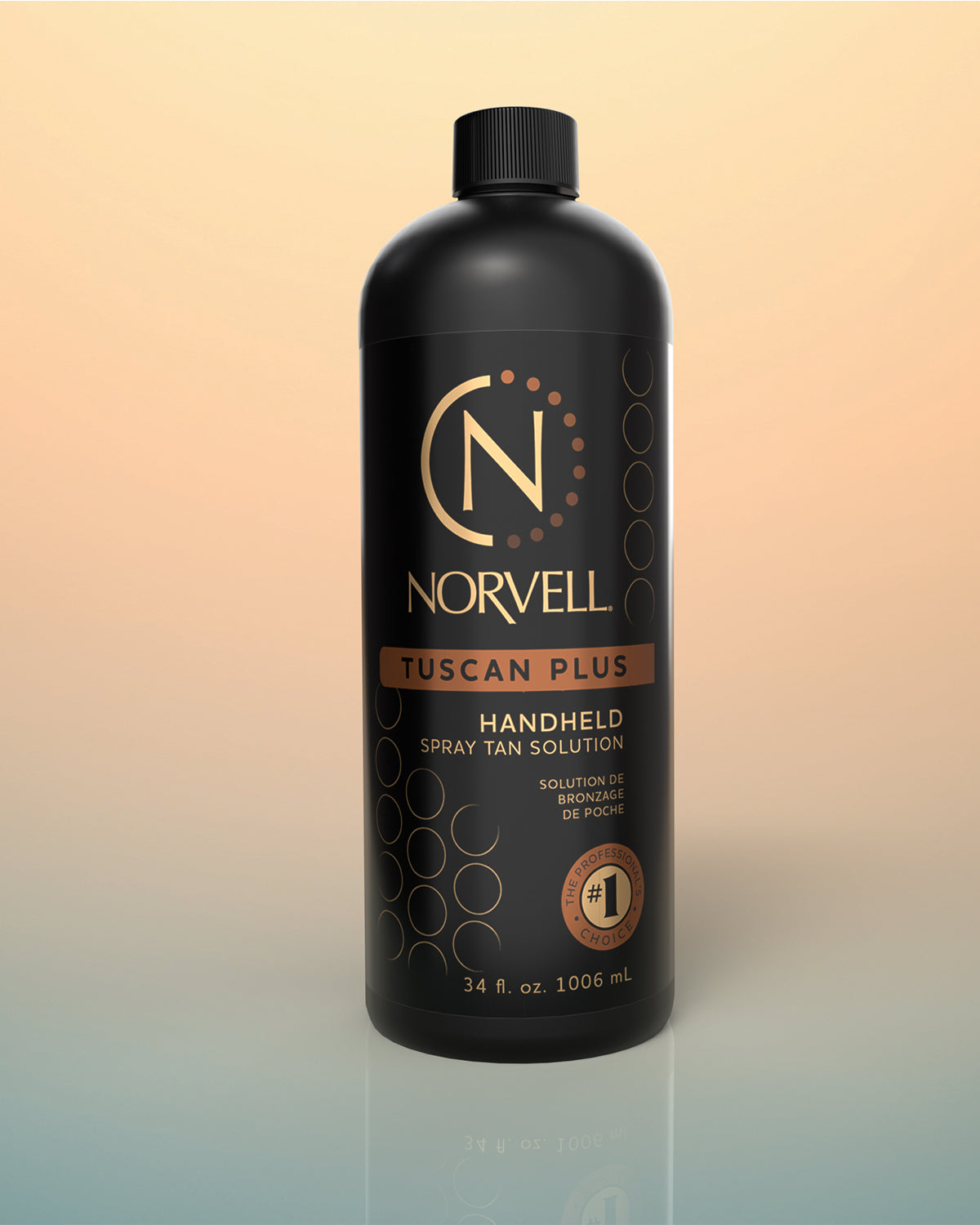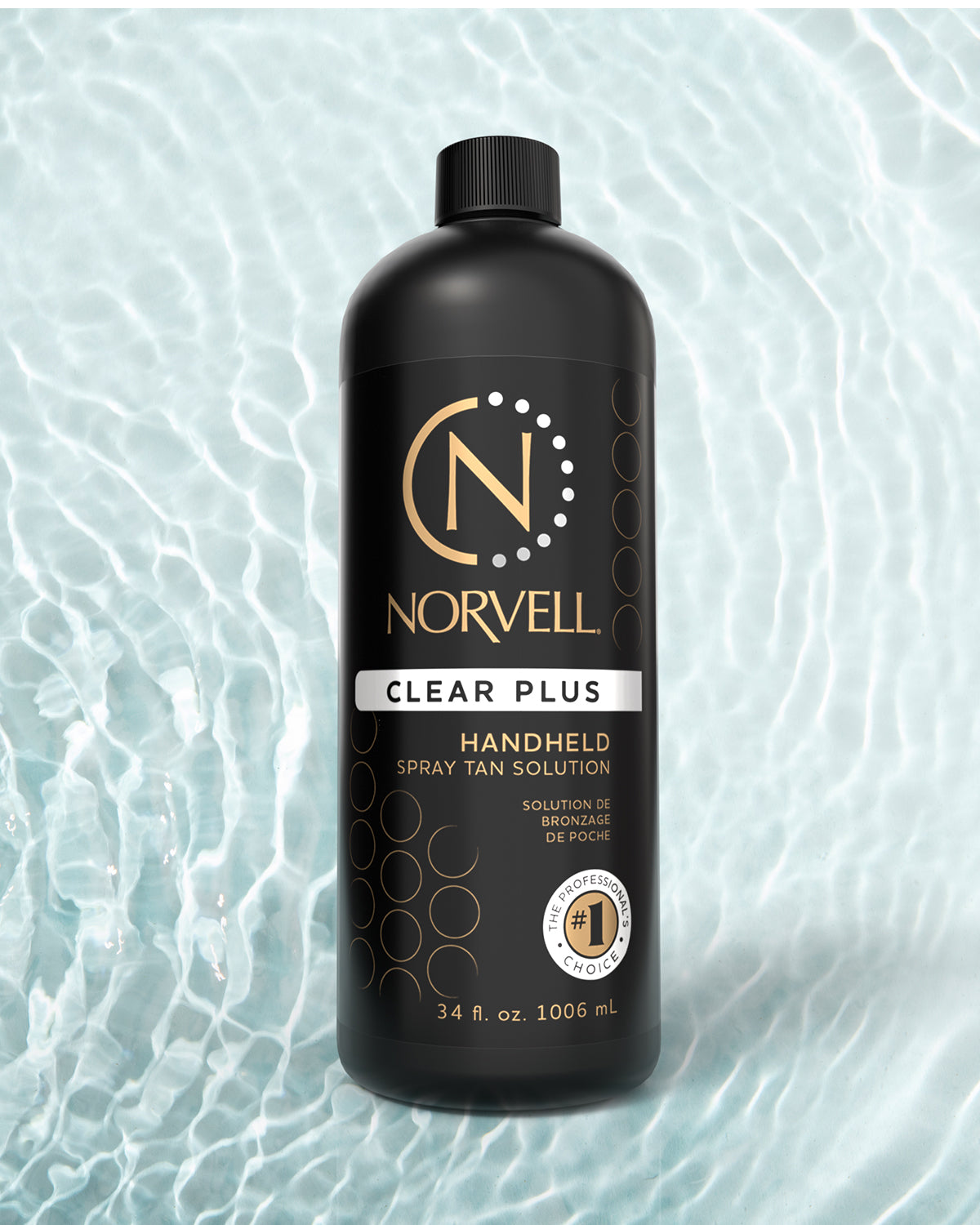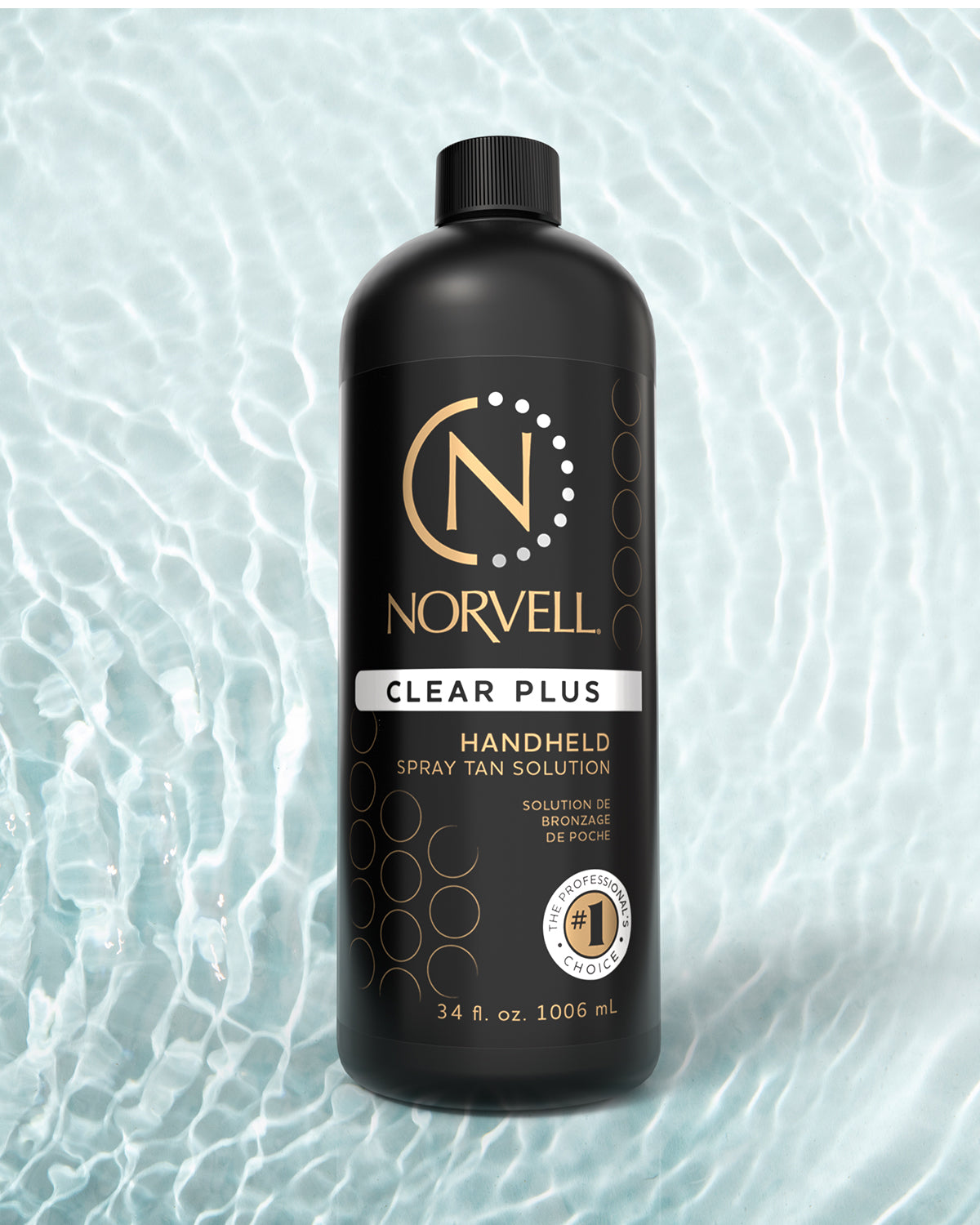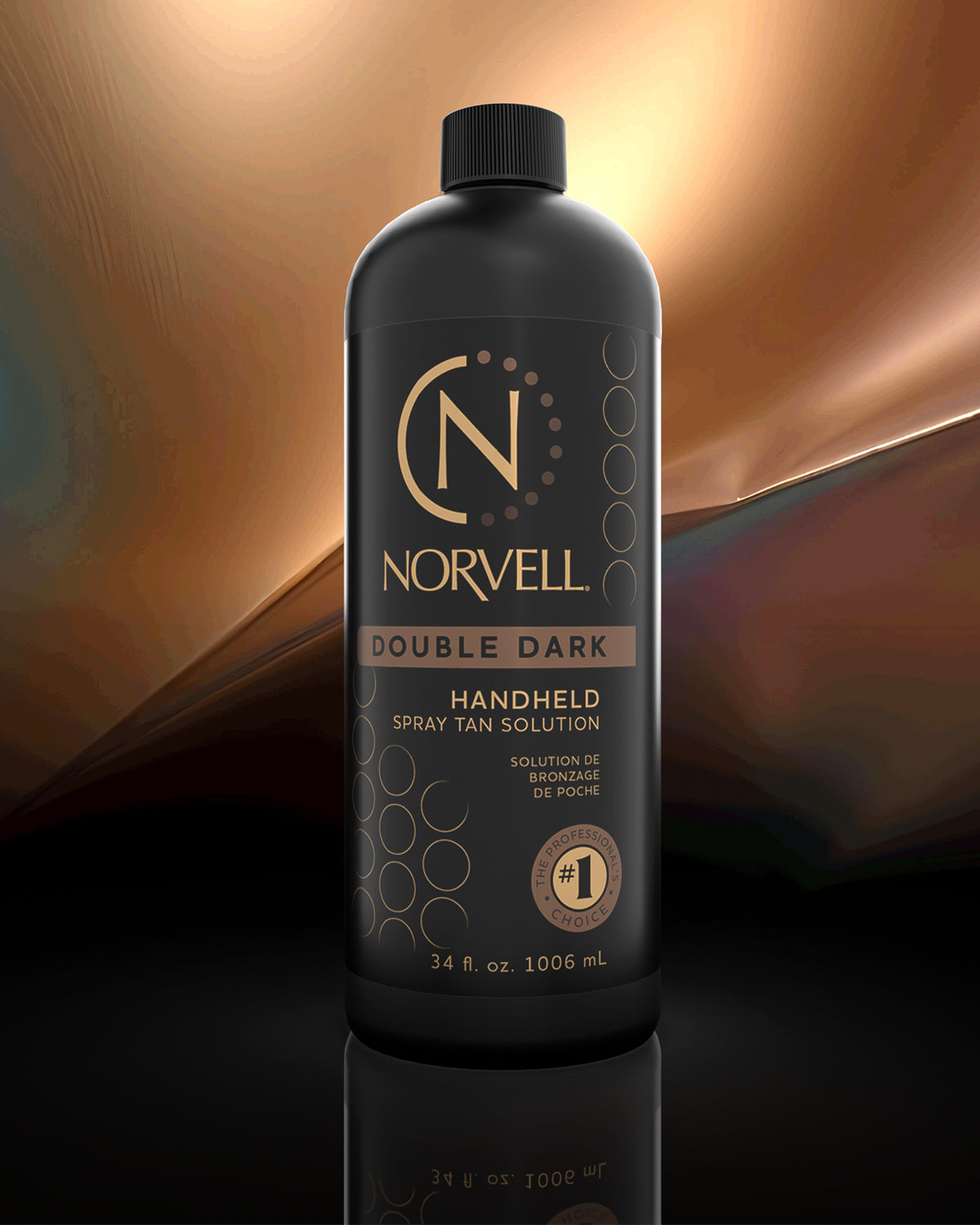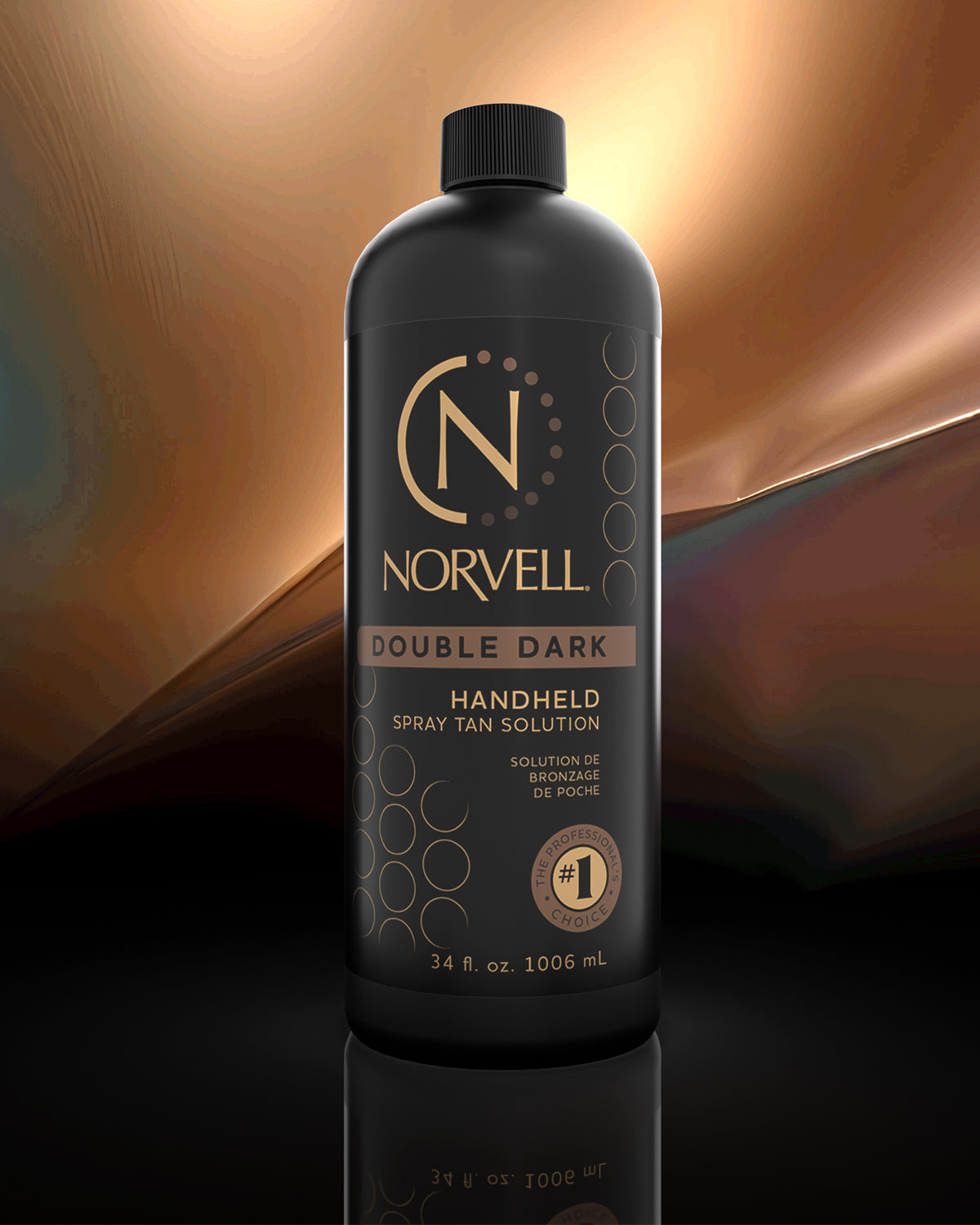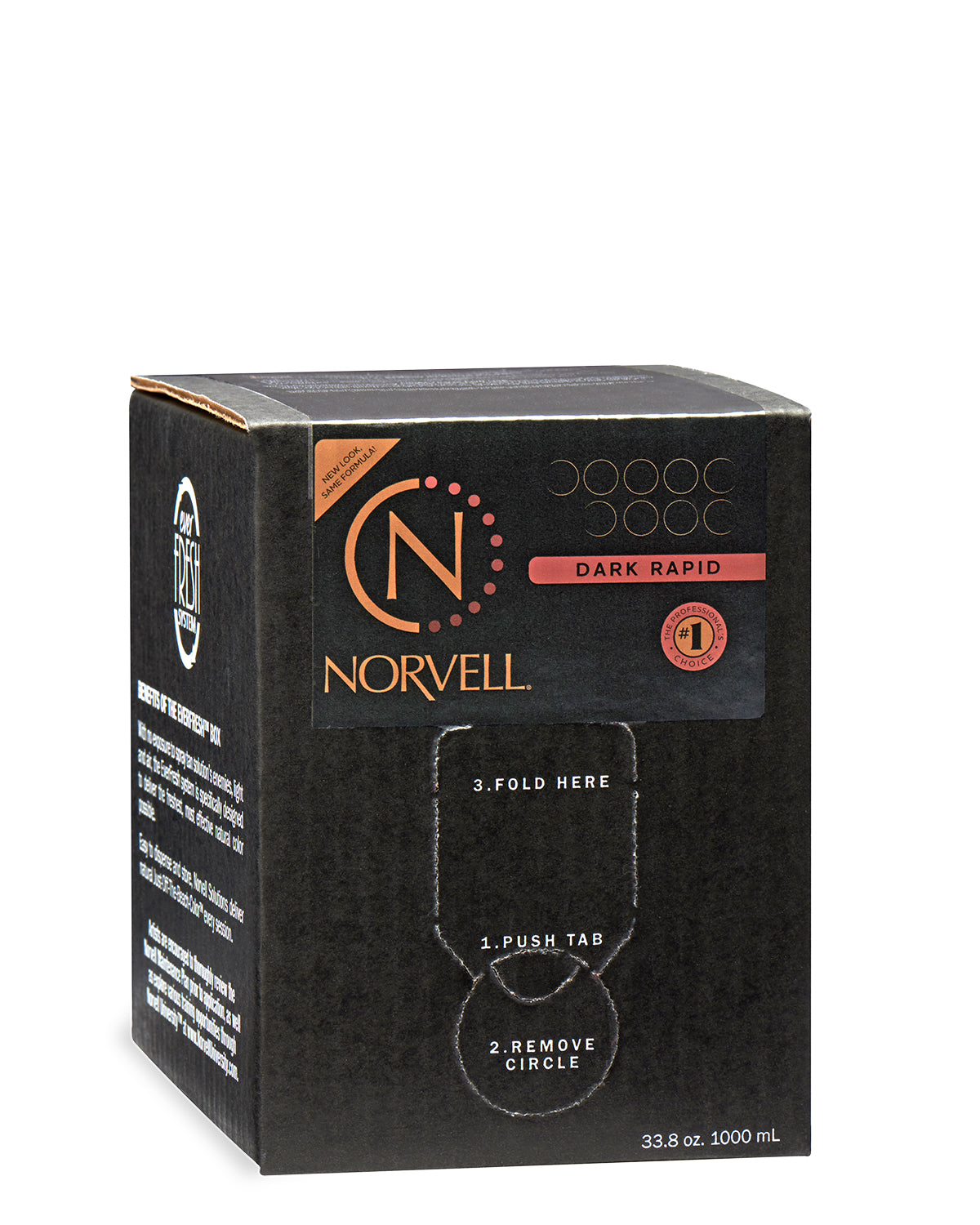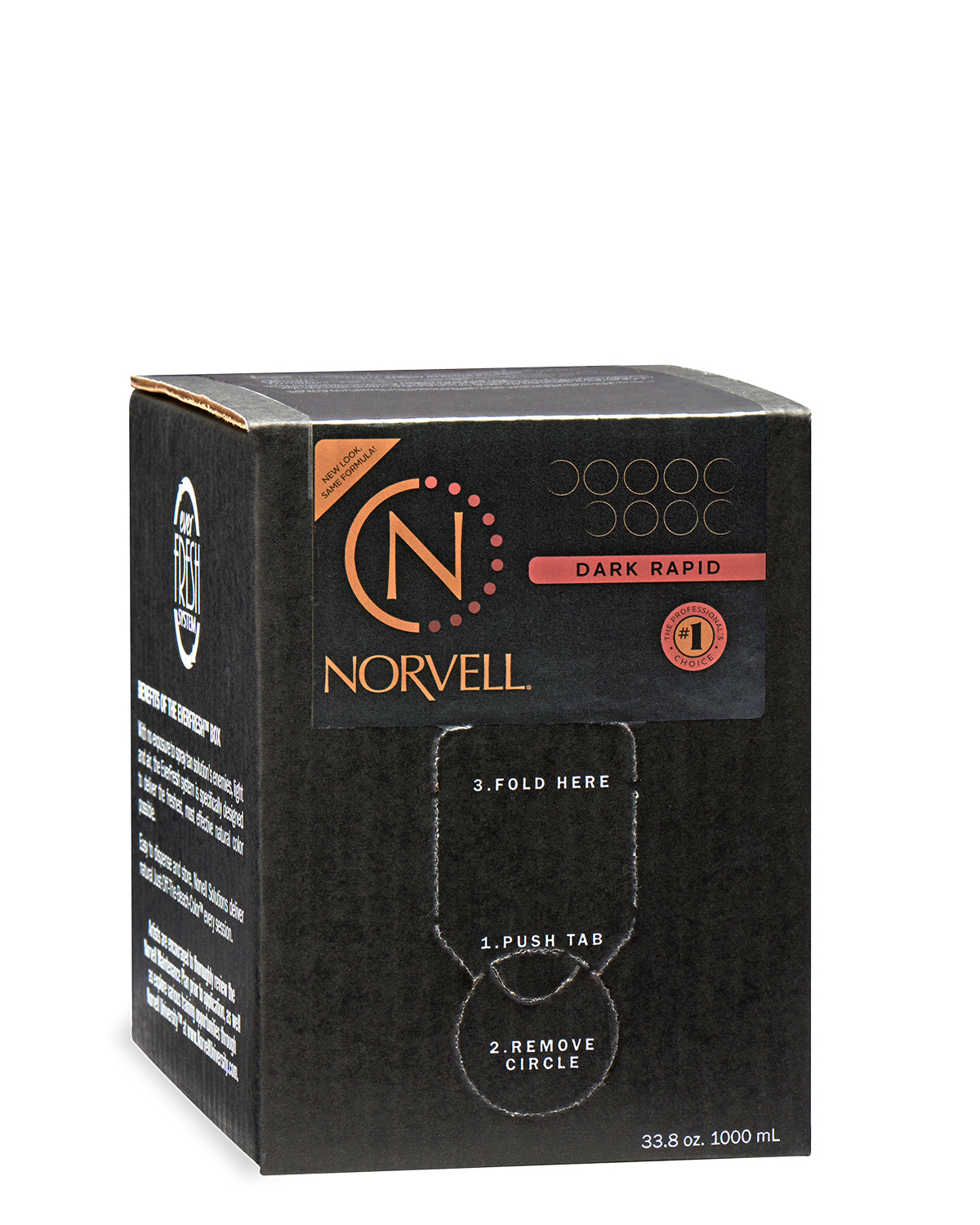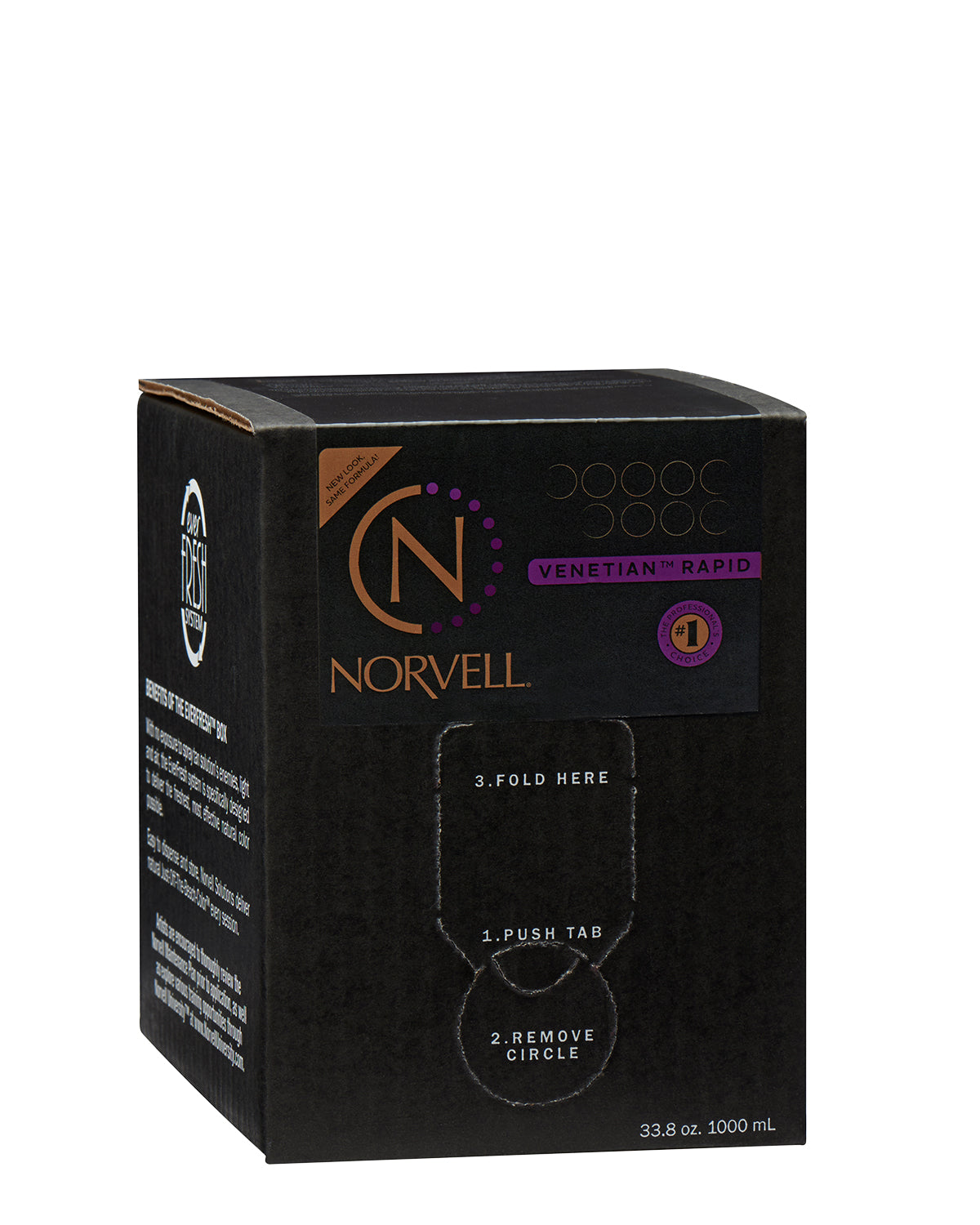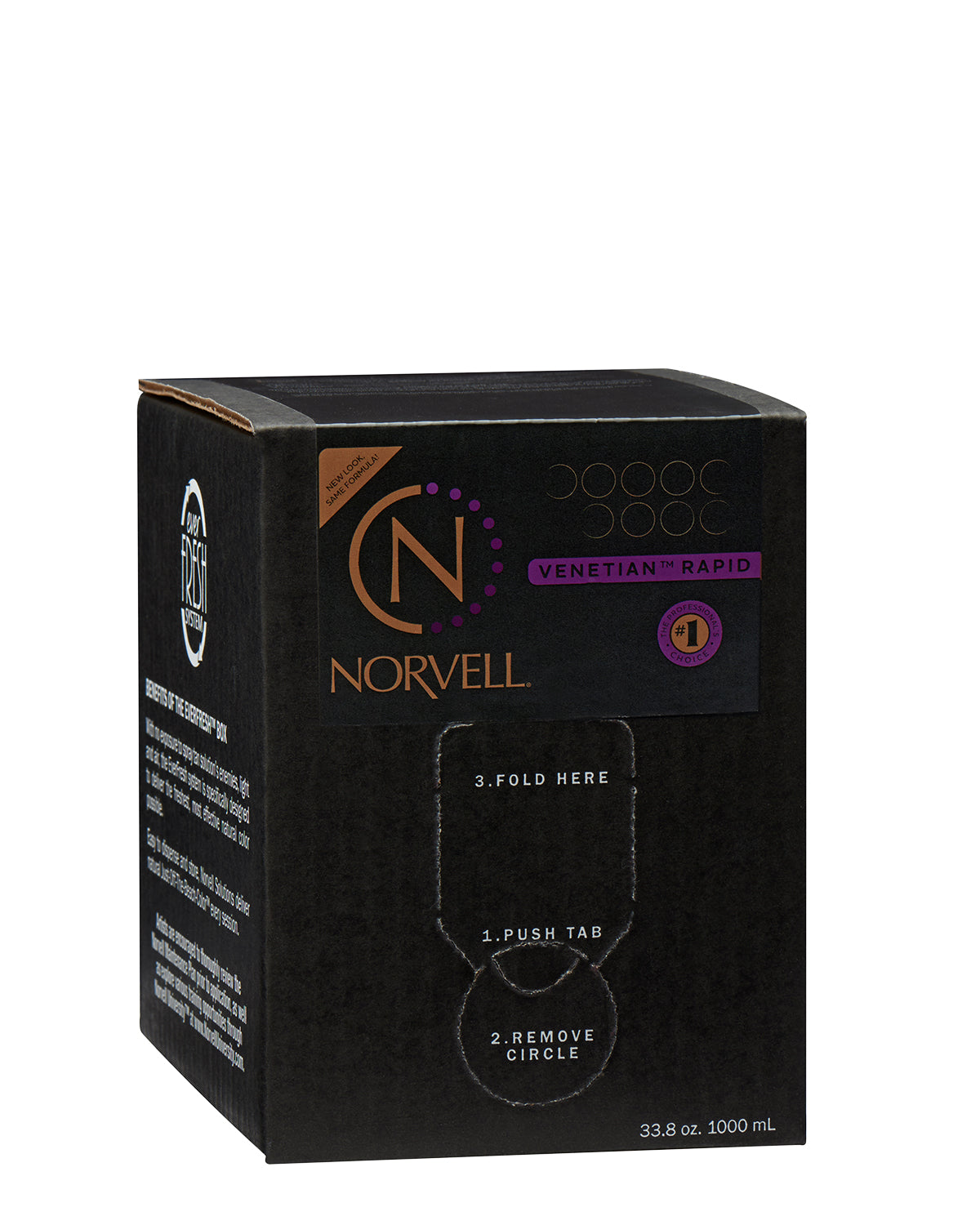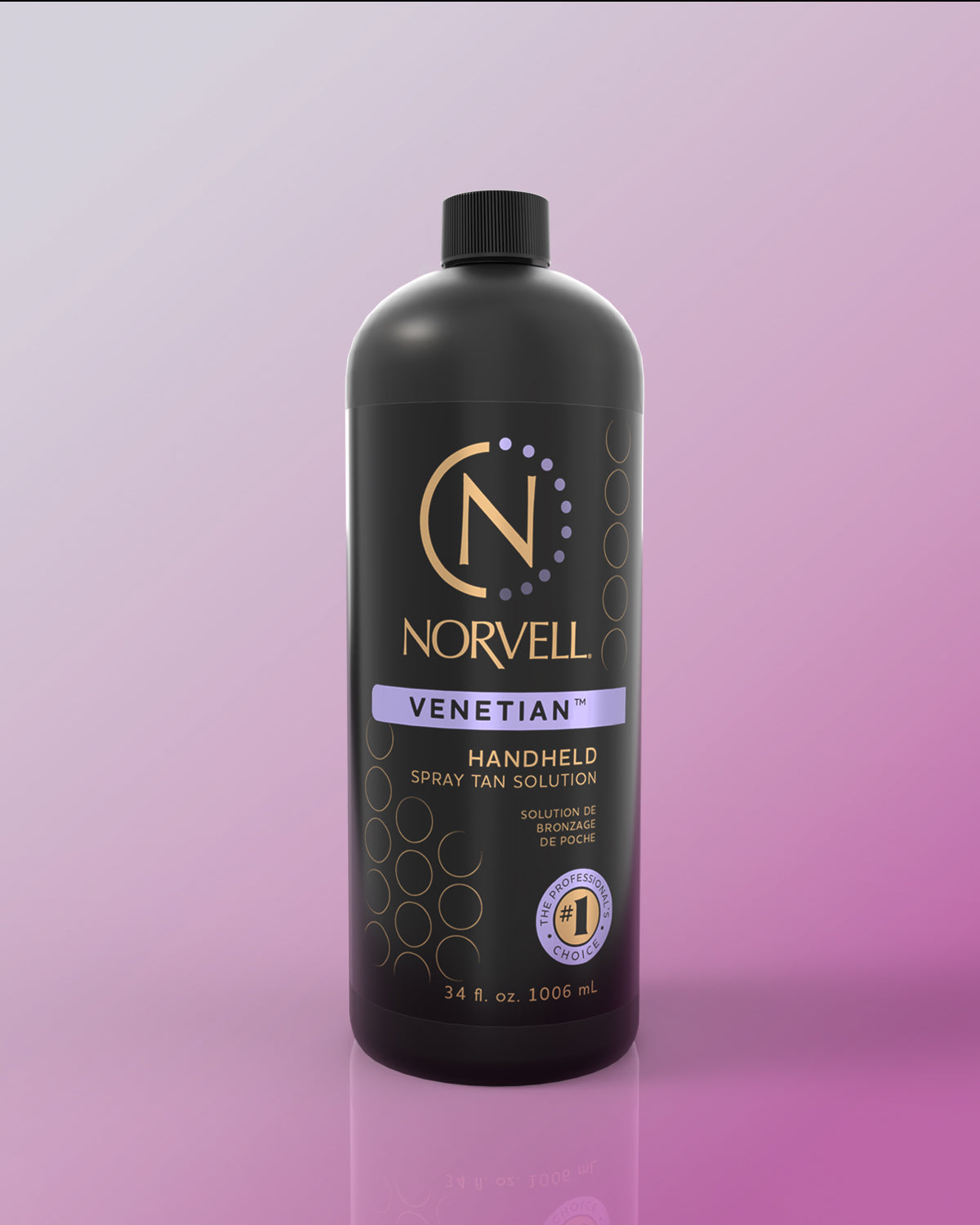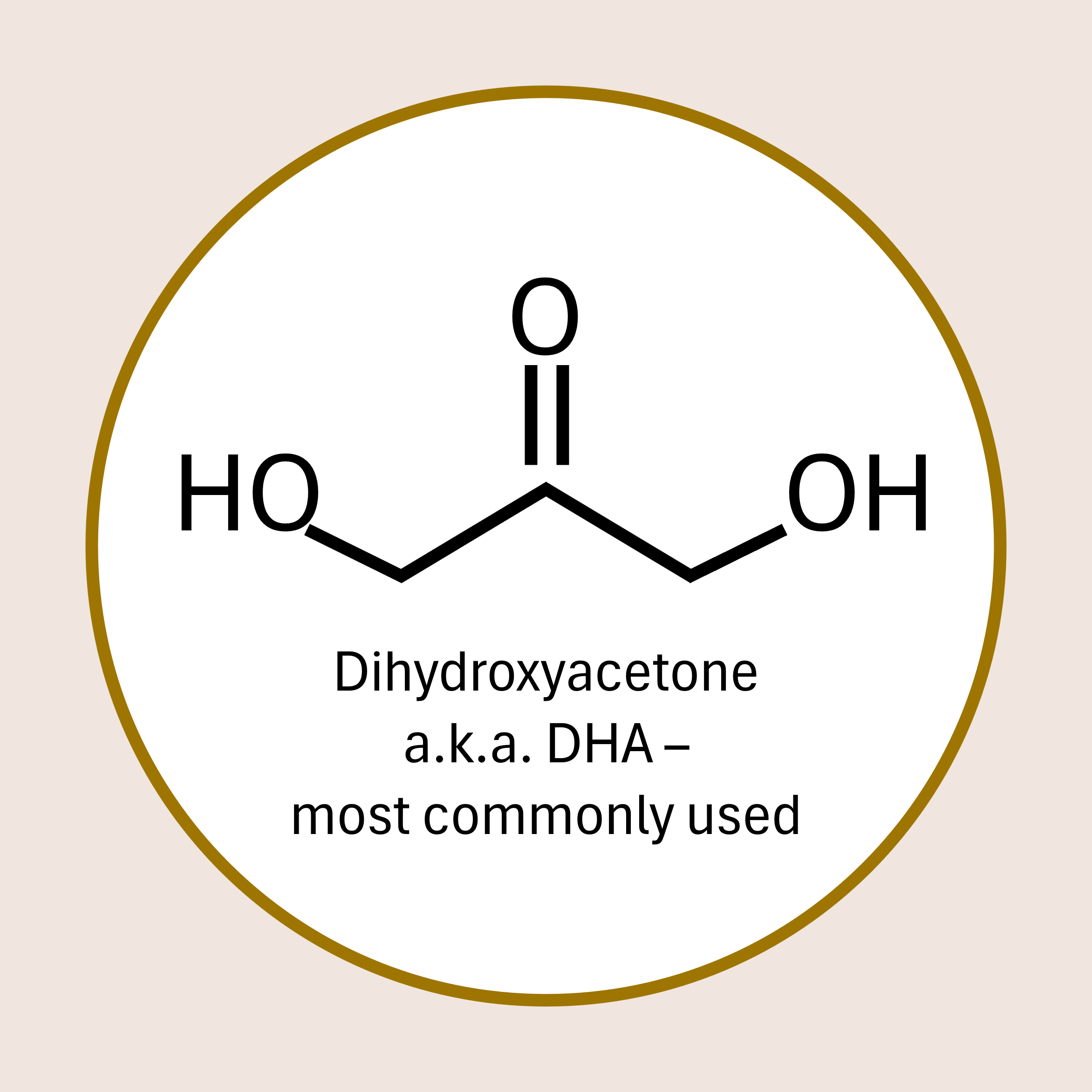
Related Posts
How to Choose a Professional Spray Tan Solution for Artists and Salons
Table of Contents Norvell Core Values Norvell Standard vs. Common Formulations The Norvell Timeline Real Results from Real Professionals Why Industry Leaders Choose Norvell FAQs The Norvell Difference: What Makes a Premium Professional Spray Tan Solution Choosing a premium professional spray tan solution is one of the most important decisions you'll make as a spray tan artist. Norvell has helped shape the sunless tanning industry from the ground up, and we've spent over four decades perfecting what professionals need to succeed. Below, we've crafted a guide to help you understand what it takes to get consistent results, happy clients, and the perfect products in your tanning salon. Let's get started. Norvell Core Values: A Commitment to Color, Artistry, and Excellence At Norvell, professionalism is about upholding a higher standard in every part of your business. We've built that standard on three foundational commitments: color, artistry, and excellence. Color is where the client experience begins. We develop our solutions to deliver rich, customizable results that adapt to every skin type, tone, and desired outcome. Using the Norvell method, you'll have full control over how color develops, ensuring a flawless, airbrushed tan that looks as natural as it feels. Artistry is what sets professionals apart. Every spray tan artist brings their own creative eye and technical skill to the booth. At Norvell, we help sharpen that talent through advanced training, award-winning product innovation, and the experience of millions of successful applications each year. Finally, excellence is what drives long-term growth. From pricing models to marketing support, we offer more than just products: we provide the business tools that help artists turn their services into sustainable success. These pillars aren't just values. They're the standard we've built since the beginning, and the reason professionals around the world choose Norvell every day. The Norvell Standard vs. Common Formulations A quality professional spray tan solution goes far beyond surface claims. Real results come from proven innovation, superior ingredients, and trusted support. The table below breaks down how Norvell stacks up against common industry formulations in the areas that matter most to professional artists: Feature The Norvell Standard Common Industry Formulations Undertone Technology Pioneered Violet Undertone Technology (VIO-7™) in 2012. Our proprietary, multi-tonal blends are designed to mimic a natural, "just off the beach" tan, eliminating the orange hue. Often rely on a single, heavy cosmetic bronzer that can appear unnatural or orange. Ingredient Quality & Formulation A True Manufacturer. All products are developed in our Ohio facility, from R&D to final shipping. Formulated with the belief that "healthy skin tans best," using cosmetic-grade, vegan, and paraben-free ingredients for a natural-looking fade. May rely on third-party labs or white-label formulas. Professional Support Passionate About the Handheld Artist. Support is backed by Norvell University, the industry's first and #1 training program, trusted by over 15,000 certified artists worldwide. Support is often limited to a standard customer service line, lacking a deep understanding of the artist's business needs. Innovation & History Founded in 1983, Pioneering Sunless in 2000. A legacy of industry firsts, including the M1000 spray gun and the first Rapid Spray Tan Solution. Part of INNOVÉ BEAUTY & WELLNESS, fusing beauty, science, and technology. Many brands are newer to the market, following trends rather than setting them with decades of R&D. All of this is what sets Norvell apart. We don't follow trends; rather, we create them. And every detail of our professional spray tan solutions reflects the experience and insight of the team that built the category from the ground up. A Legacy of Innovation: The Norvell Timeline Decades of research, first-to-market innovation, and a deep understanding of the artist's craft have positioned Norvell as a trusted professional spray tan solution in the industry. This timeline highlights the key milestones that built the foundation for our continued leadership in sunless tanning. The Norvell Innovation Timeline: 1983: Norvell is founded by Rick Norvell in Nashville, TN, with Norvell Skincare Solutions and its first product, Body Drench Lotion 2000: Norvell expands into Sunless Spray Tanning, scaling the category and setting the tone for a new industry 2007: Launch of the Norvell M1000 Spray Gun, raising the bar for handheld equipment performance 2009: Norvell University is founded as the industry's first certified spray tan training program 2009: The Norvell Arena professional backdrop is also introduced 2012: Launch of the iconic Venetian Solution with VIO-7™ technology, designed to neutralize orange undertones and deliver flawless, beach-ready color 2014: Introduction of Norvell's Competition Solution, developed for precision and performance under pressure 2016: Norvell becomes part of INNOVÉ (formerly Sunless Inc), joining a portfolio dedicated to beauty, science, and technology; Launch of the first Rapid Spray Tan Solution in an industry-first Everfresh box 2018: Norvell is named the #1 professional spray tan brand, based on use by certified spray technicians and industry recognition 2020: Norvell launches the Oasis Spray Gun, redefining mobile tanning convenience and control 2024: Debut of Tuscan Plus Solution, a one-of-a-kind color innovation engineered for depth, richness, and lasting impact See the Difference in Action: Real Results from Real Professionals A premium professional spray tan solution performs beautifully in real studios, on real clients, and in the hands of real professionals. Norvell-certified artists around the world trust our formulas to deliver consistent, natural-looking color that truly develops client loyalty. If you're deciding how to choose a spray tan solution, there's no better proof than seeing it in action. [Placeholder for UGC video gallery] Why Industry Leaders Choose Norvell Time and Time Again Since 1983, our team has led the innovation, education, and quality standards that define what makes a premium professional spray tan solution. Norvell University is the industry's first and most trusted spray tan certification program, training more professionals than any other brand in the world. With more than 15,00 certified technicians across 30 countries, we've created a global network of experts who spray with confidence, consistency, and a commitment to excellence. Our refusal to cut corners on ingredients is what truly separates Norvell from common spray tan brands. We develop every formula in-house at our Ohio facility, using vegan, paraben-free, and cosmetic-grade components that support healthy skin and a flawless fade. After all, we believe that healthy skin tans best, and we engineer our products with that principle at their core. From the original launch of sunless tanning as a category to the development of the first violet undertone technology, Norvell has shaped the expectations of both artists and clients around the world. This is why the industry's top artists continue to choose Norvell. Take the Next Step for Your Business With Our Trusted Professional Spray Tan Solutions You've seen what sets Norvell apart, and why a premium professional spray tan solution starts with choosing a brand that backs your craft, your clients, and your long-term success. Whether you're just getting started or ready to upgrade your offerings, we make it easy to take the next step. Ready to see the Norvell difference yourself? Explore our best-selling solutions. Professional Tanning Solution FAQs What is the shelf life of a premium professional spray tan solution? While most unopened solutions have a shelf life of at least 10 months, we recommend using them within 6 months once opened for optimal results. For the most accurate guidance, always refer to the "Best By Date" printed on the bottom of your bottle. To maintain maximum color performance and DHA stability, store your solution in a cool, dark place and avoid extreme temperatures. Can I use Norvell spray tan solution with any spray tan machine? Yes, Norvell solutions are compatible with most HVLP and airbrush spray tan machines. However, for optimal results, we recommend using Norvell equipment, such as the M1000 or Oasis Spray Gun, which are specifically designed to pair perfectly with our formulas. How do I know which Norvell spray tan solution is right for my clients? We've designed each Norvell solution for specific skin tones, undertones, and development preferences. For example, Norvell Venetian and Tuscan Plus create different results based on their unique undertone. Venetian is formulated with violet undertones to neutralize orange and create a rich, Mediterranean-brown tan. Tuscan Plus is uniquely designed with caramel brown and subtle rose undertones, which produce a beautiful, naturally sun-kissed tan with a hint of rosy warmth. Explore our Colorology Chart or consult Norvell University training for expert guidance. What ingredients should I look for in a professional solution? Beyond standard clean beauty claims like being vegan and paraben-free, a truly premium professional solution is defined by its core active ingredients. Erythrulose is a premium ingredient that works in synergy with DHA to perfect the tan. Because Erythrulose is a more expensive ingredient, some brands omit it to cut costs. However, this often comes at the expense of the tan's longevity and natural appearance. At Norvell, we formulate with Erythrulose because we believe a superior, longer-lasting, and more hydrating tan is the professional standard. Do Norvell products meet clean beauty or ingredient-safety standards? Absolutely! Norvell solutions are formulated with cosmetic-grade, vegan, paraben-free ingredients. They are also non-comedogenic and nut allergy-safe. Related Posts How to Choose a Spray Tan Machine: The Ultimate Buying Guide for Professionals Learn More How to Start a Thriving Spray Tan Business in 90 Days Learn More Professional Spray Tan Pre & Post Care Essentials Learn More
Learn moreYour Guide to Spray Tan Marketing: Attracting, Converting, and Retaining Loyal Clients
Table of Contents Stage 1: Attraction Stage 2: Conversion Stage 3: The Experience Stage 4: Retention Frequently Asked Questions From Great Artist to Smart Marketer Running a spray tan business takes more than skill with a spray gun. You can deliver flawless results, but without strong spray tan marketing, your books will stay empty. Thankfully, understanding this unique type of marketing is easy with the help of Norvell experts. Below, we've created the ultimate Client Lifecycle Marketing Plan: a proven framework to attract new clients, convert them into appointments, and retain them for lasting loyalty. With Norvell as your partner, you gain strategies that grow your business and position you as the go-to artist in your market. Stage 1: Attraction – Getting Your First Wave of Clients The first challenge in spray tan marketing is getting noticed. Attraction is about building visibility, sparking curiosity, and positioning your business where potential clients are already looking. With the right strategies in place, you can create awareness that leads to piqued interests and a stronger presence in your local market. Here's how you can do that most effectively. Building Your Digital Storefront: Website & Social Media Essentials Your website and social media profiles act as your portfolio, shaping first impressions before a client ever books. A polished website with service details, pricing, and an easy booking link builds trust instantly. Since spray tanning is an intimate service, add a 'Meet the Artist' section to introduce yourself and your passion. Showcase your knowledge with educational content, like video responding to FAQs to position yourself as an expert to would be clients. When social media profiles are full of result photos, transformations, testimonials, and even behind-the-scenes content you showcase who you are as a spray tan artist. Local SEO Basics: Getting Found on Google Maps Local search drives many new bookings, and Google Maps is where clients start. By creating a complete Google Business Profile with photos, hours, and reviews, you will improve your company's visibility tenfold. Adding location-based keywords to your site will also increase the chances of discovering and boosting your spray tan advertising efforts. Initial Buzz: Leveraging Friends, Family, and Local Partnerships Your first wave of marketing often comes from the people already in your circle, and that's perfectly fine! It can be a great idea to offer discounted or modeled sessions to friends and family, as this can help you build a starter profile. Partnering with local businesses like salons, gyms, or bridal shops also introduces you to audiences who already value beauty services. These grassroots tactics create authentic connections that support long-term spray tan marketing success. Stage 2: Conversion – Turning Interest into Appointments Attraction builds awareness, but conversion turns that attention into paying clients. This stage of spray tan marketing focuses on creating compelling reasons to book and removing barriers that may slow the process. Here's how we suggest turning that initial spark of interest into a full-on booked appointment. Creating Your Irresistible Offer: New Client Specials & Packages A strong introductory offer gives potential clients a reason to try your services now instead of waiting. New client specials, bundle deals, or seasonal promotions add urgency while showcasing the value of your work. These offers can also set the stage for repeat visits when paired with future packaging pricing. Here's a pro tip from our educators: Don't just bundle tans; bundle the experience. Try offering a package of three spray tans that includes a free trial-size aftercare product, like a tan extender. This encourages client loyalty, proves the amazing results of your retail line, and teaches them how to properly maintain their tan. Effective spray tan advertising highlights these deals clearly and positions them as limited opportunities worth taking. Instead of running a generic sale, create timely offers around local events where people want to look their best. Think Homecoming & Prom Glow Packages, Holiday Party Prep, or a special for New Year's Eve. Tying your spray tan advertising to specific moments gives clients a compelling reason to book now. Show, Don't Tell: Building a Stunning Portfolio on Instagram Clients want proof that your spray tans look natural, consistent, and professional. A well-curated Instagram profile with before-and-after photos builds that credibility instantly. Highlighting real clients rather than stock images creates trust and makes your artistry relatable. Strong visual storytelling turns your feed into a conversion tool that supports spray tan advertising ideas. Making It Easy to Book: Online Scheduling & Clear CTAs Even the best offer falls flat if booking feels complicated. Online scheduling systems should allow clients to choose services and times without back-and-forth messages. Adding visible "Book Now" buttons and simple instructions keeps the process direct and frustration-free. Stage 3: The Experience – Creating a Client for Life A flawless spray tan is only part of what keeps clients returning. The overall experience is what shapes how they remember your business and whether or not they recommend you to others. This stage of spray tan marketing focuses on personalization, education, and memorable details that turn a first appointment into lasting customer loyalty. The Perfect First Appointment: Consultation & Customization Every client arrives with different goals and skin tones, which makes consultations essential. Asking the right questions about undertones, event timing, and personal preferences shows professionalism and builds confidence. Additionally, customizing the spray tan solution with the right shade and formula prevents the "orange" look that clients have nightmares about. By treating each appointment as unique, you position yourself as the expert they can rely on for consistent results. Educating on Aftercare (and a Chance to Upsell Retail Products) Client education is one of the most effective spray tan marketing techniques because it directly impacts satisfaction and retention. Explaining proper aftercare – such as when to shower, which lotions to use, and what to avoid – helps clients maintain their glow longer. Offering retail products like Norvell self-tanning mousses or tan-extending lotions gives your clients a feeling of convenience, all while boosting revenue. The Small Touches That Create a "Wow" Experience Clients will always remember the details that make them feel valued. Simple touches such as providing disposable wipes, adding a refreshing scent in the room, or offering unique drinks and snacks before and after tanning can truly elevate your service. These thoughtful extras strengthen loyalty and encourage positive reviews that double as spray tan advertising. After all, a client who feels truly cared for will not only return, but also refer others who want the same premium experience. Stage 4: Retention – Keeping Your Calendar Full While garnering new clientele is critical, retention truly defines long-term growth and success. This stage of spray tan marketing is all about building lasting relationships that keep clients returning and spreading the word. With consistent communication, loyalty rewards, and powerful social testimonials, you can transform casual visits into steady business. Let's examine how. Stay Top-of-Mind: Simple Email & SMS Marketing Regular communication ensures your clients remember you when they need their next tan. Short text reminders, seasonal specials, and aftercare tips sent by email or text add value without overwhelming. Tools like automated scheduling make it easy to reach your entire client base with consistent messages. By staying visible in their inbox or phone, you keep your brand top-of-mind and encourage repeat bookings. Building Loyalty: Referral Programs & VIP Tiers Structured loyalty programs encourage clients to keep coming back while sharing your services with friends. Think of it like our own commitment to you. For example, in the Norvell Tanning Rewards Program, we reward professional artists with points based on their spending, which can be redeemed for exclusive perks. You can create a similar system for your clients, turning their loyalty into a growth engine for your business. Even something as simple as a stamp card offering your client a free or discounted session after a certain number of visits can increase client commitment. Overall, these spray tan advertising strategies deepen relationships and turn satisfied clients into long-term supporters. The Power of Reviews: How to Ask for and Leverage Testimonials Finally, having positive reviews online builds trust and influences new clients. The best time to request a review is right after a client expresses satisfaction, while the experience feels fresh. You can offer discounts for those who leave reviews, too. Offering a direct link to your Google or Yelp profile makes the process fast and simple. Then, once collected, these testimonials can double as marketing material for your website or socials. Your Next Steps With Norvell Your growth as a spray tan professional does not stop here. Norvell offers the tools, training, and professional equipment to help you put this spray tan marketing plan into action and elevate your business exponentially. Explore our How to Start a Spray Tan Business blog for step-by-step guidance, or advance your skills through Norvell University training classes. No matter what resources you need to support your spray tan company, with Norvell as your partner, you'll get what you require for lasting success. Spray Tan Marketing FAQs Learn more about how to get more spray tan clients through our frequently asked questions below. How much should I budget for spray tan advertising each month? Your budget depends on business size and goals, but many artists start with $100-$300 per month for local ads. This can cover Facebook and Instagram promotions targeting clients in your area. Remember: even small budgets can generate results if your messaging highlights irresistible offers and clear booking links. What are the best spray tan advertising ideas for the bridal season? Bridal season is one of the busiest times for growing your client base. Advertising ideas may include partnering with bridal boutiques, offering group packages for wedding parties, and running limited-time "bridal glow" specials. How do I get more spray tan clients during slow months? Slow months are an opportunity to run tanning salon specials that attract new traffic. Off-season offers like loyalty discounts, flash sales, or bundled retail products can help fill your calendar. Pairing these promotions with consistent email and SMS marketing keeps your business top-of-mind year-round. What role do photos and branding play in spray tan marketing? Strong visuals build trust and set you apart from competitors. Branded photoshoots, consistent color palettes, and client before-and-afters create a recognizable style that makes your business memorable. How soon should I ask new clients for referrals? Referrals work best once a client has returned at least once and trusts your service. At that point, offering small rewards for sending friends your way can spark steady growth. Combining referral perks with VIP programs makes getting more spray tan clients easier through word-of-mouth. Related Posts How to Choose a Spray Tan Machine: The Ultimate Buying Guide for Professionals Learn More How to Start a Thriving Spray Tan Business in 90 Days Learn More Professional Spray Tan Pre & Post Care Essentials Learn More
Learn moreHow to Choose a Spray Tan Machine: The Ultimate Buying Guide for Professionals
Getting the right spray tan machine is critical for any professional who wants consistent results and happy clients. But, with multiple types of spray tan machines available, it can be difficult to know which model fits your business goals and aligns with your routines. Thankfully, Norvell Tanning and our expertise are here to help. Below, we’ll walk you through how to choose a spray tan machine based on technology, key features, and real use cases so you can find the best choice for your workflow. Let’s get started.
Learn more



